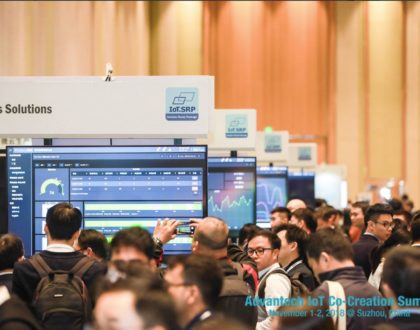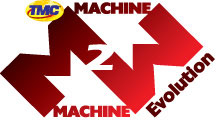The Journey of 1000 Miles Begins With Locating Your Car Keys
by Mike Fahrion
Temporarily escaping another interminable Midwestern winter was a treat by itself, and the 2015 M2M Evolution conference in Miami was icing on the cake. B+B SmartWorx, using our new company name and brand identity, had a large presence as a sponsor and an exhibitor, while also filling three speaking slots. I spent a sizeable portion of my own time delivering a keynote and presenting at tech sessions, describing the ways in which the publish/subscribe MQTT protocol can be leveraged in IoT systems as well as discussing the migration from SCADA to industrial IoT. But I also got to spend a lot of time mixing it up with thought leaders from every aspect of industrial IoT. And I didn’t have to wear a parka to do it.
In my conversations with customers, technology partners and industry analysts, I was reminded that many people are still hesitant to take their first step into industrial IoT. They’re failing to take advantage of opportunities that already exist. It’s not that interest could possibly be any higher, or that they can’t see the benefits that IoT information streams can provide. But, for many people, this whole “IoT” thing is still a bit too fuzzy and they’re having some trouble getting their arms around it. In most cases they are overthinking it. In their quests to devise the perfect, fully baked “IoT Strategy”, and with their concerns about making some costly mistake, they prevent themselves from doing anything at all. Many seem to think that migrating to industrial IoT tech will have to be a single, light switch event that instantly renders all of their existing systems obsolete. That’s certainly a scary thought. Thankfully, it’s also a load of hooey.
We do need to stop architecting point-in-time solutions to point-in-time problems, and generating silo after silo of equipment, personnel and data. But we don’t need a crystal ball that can see five years into the future before we can start implementing IoT tech to eliminate the silos. One of the beauties of IoT concepts is the technical flexibility. Industrial IoT will incorporate existing infrastructure, rather than replacing it, and a huge proportion of the “things” included in the “Internet of Things” will be devices that are already out there. The difference is that those devices won’t be trapped in their silos anymore. Rather than reporting only to HMIs, PLCs or some single application on the network, they will be able to make their data available to any application, anywhere that the data can be useful.
Granted, it’s currently a lot more confusing than it needs to be. New “IoT” software platforms keep popping out of every nook and cranny, and there are already so many that it’s hard to keep up. There’s lots of money being invested in that arena and I’m sure we’ll keep seeing plenty of activity. But there will inevitably be some consolidation. The winners will be the software tools that make it the easiest to distill information from multiple sources while enabling the transition from simple data reporting to predictive, and then prescriptive, analytics.
Full IoT solutions are complex, as they require expertise in both IT technology and operations (OT) technology. But this complexity spells opportunity for many people. That includes many of my blog readers, as well as any solutions company that has specific application expertise, understands OT and has a strong IT background. In most companies the divide between IT and OT is too large. An IT department that has a strong operations background is extremely rare. An Operations side that is equipped to handle IT issues is equally rare. So tomorrow’s industry leaders will be the companies that can close the gap between IT and OT before their competitors do.
Industrial IoT isn’t a destination; it’s a journey. Every company will migrate to industrial IoT at its own pace, deploying appropriate IoT technologies when they see opportunities to cut costs, increase efficiencies and improve processes. Many companies have already begun reaping the rewards that IoT information streams can provide, simply by implementing IoT tech that is already available. They’re not uprooting their existing infrastructure. They’re simply adding some IoT tech to the mix and acquiring some exciting new capabilities. They may not be where they’ll be five or ten years from now, but at least they’ve picked up the car keys and begun the journey.
B+B SmartWorx can help you begin the journey, too. If you have any questions or comments about industrial IoT, I’d love to hear from you
Recommended Posts

Co-Creation, Paving the Way to a More Connected Future
November 27, 2018

The Benefits of a ‘Do It For Me’ Mentality in the IIoT
October 5, 2018

Why You Need to ‘Mind the Gap’ in Manufacturing Technology
August 31, 2018

